Screening Skin for Chronic GVHD
Shown below are clinical manifestations that are potential early indicators of chronic GVHD of the skin. If skin GVHD is suspected, a timely collaboration with the patient's transplant center is recommended to confirm the diagnosis and to develop and evaluate a treatment plan.
These guidelines are based on published diagnostic criteria from the National Institutes of Health (NIH) Consensus Development Project on chronic GVHD. [1,2,3]
Clinical Examination
- Complete visual examination of the skin with particular attention to pigmentary changes, rashes, textural changes, tightness, areas of thickening or skin breakdown, ulcers or erosions
- Palpation for areas of sclerosis or fasciitis
Diagnostic Testing
- Skin biopsy
Patient-Reported Symptoms and Signs
- Itching
- Dry skin
- Limited mobility
- Rash
- Sores
- Changes in skin coloring or texture
- Edema
Possible Manifestations
Poikiloderma
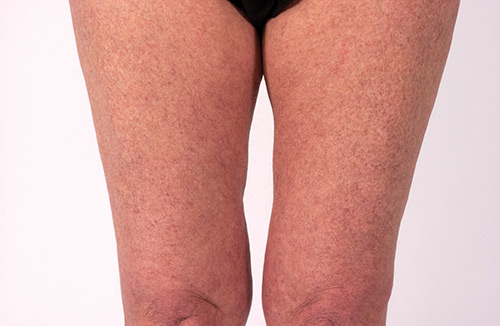
Atrophic and pigmentary changes and telangiectasia
Lichen Planus-Like Features
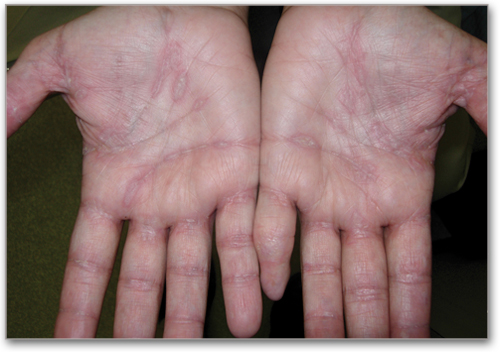
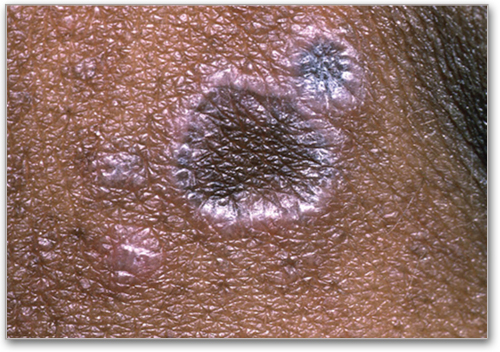
Erythematous/violaceous flat-topped papules or plaques with or without surface reticulations or a silvery or shiny appearance
Sclerotic Features
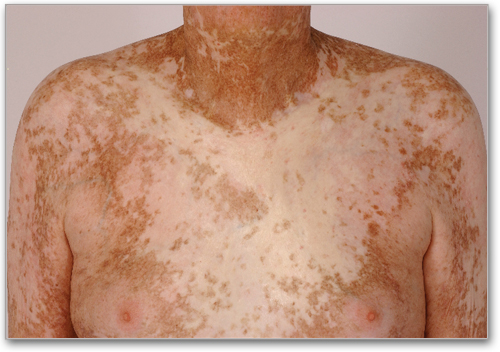
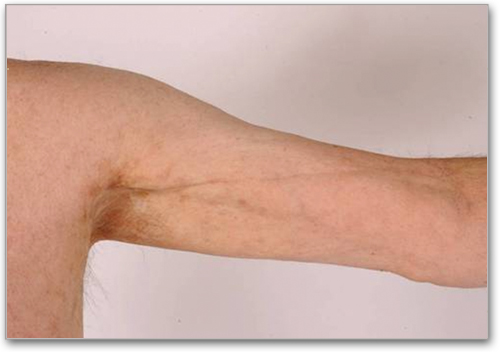
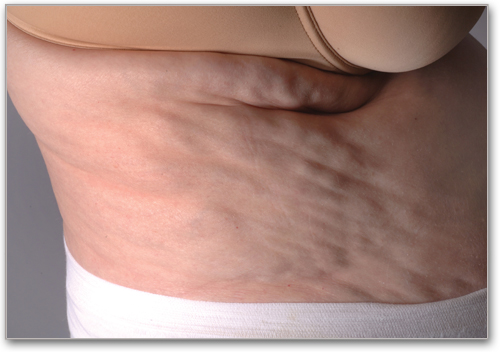
Smooth, waxy, indurated, thickened or tight skin and soft tissues caused by deep and diffuse sclerosis over a wide area
Lichen Sclerosus-Like Features
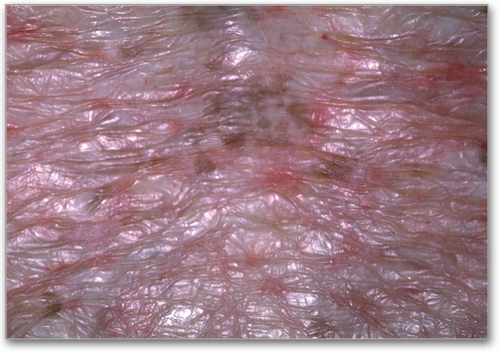
Discrete to coalescent, gray to white, moveable papules or plaques, often with follicular plugs, with a shiny appearance and wrinkled texture
Morphea-Like Features
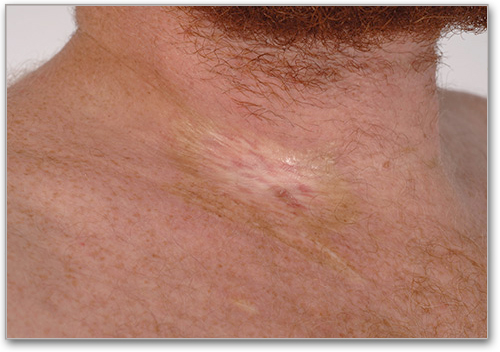
Localized patchy areas of moveable smooth or shiny skin with leather-like consistency, often with dyspigmentation
Depigmentation*
Loss of normal pigmentation (vitiligo)
Papulosquamous lesions*
Scaly skin, with plaques and/or papules
Sweat Impairment**
May manifest as heat intolerance due to loss of sweat glands
Ichthyosis**
Rough, thick and scaly skin
Hypopigmentation**
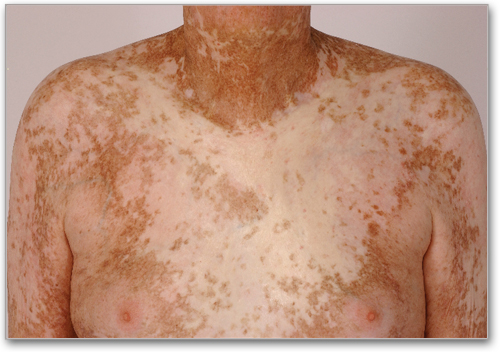
Diminished pigmentation of the skin
Hyperpigmentation**
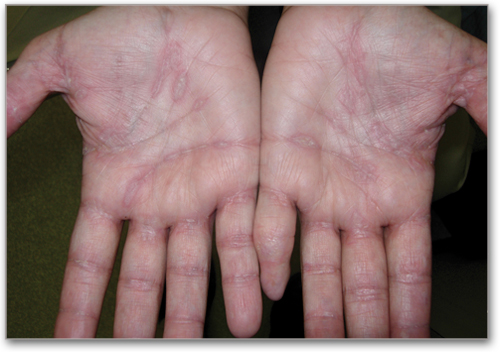
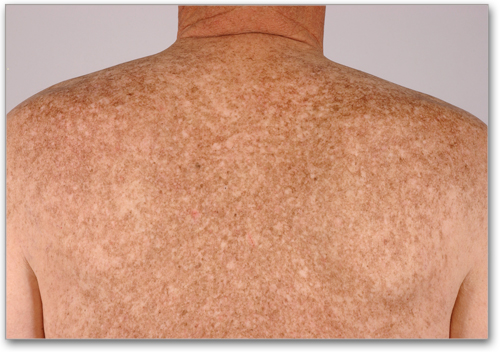
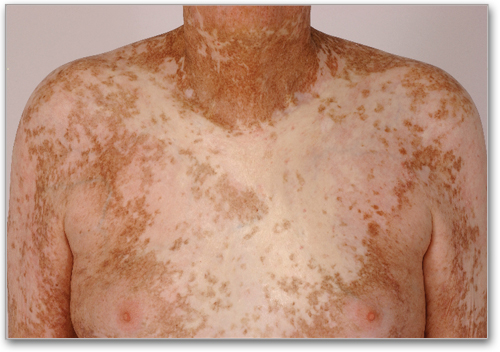
Darkening of the skin due to pigment deposition
Keratosis Pilaris**
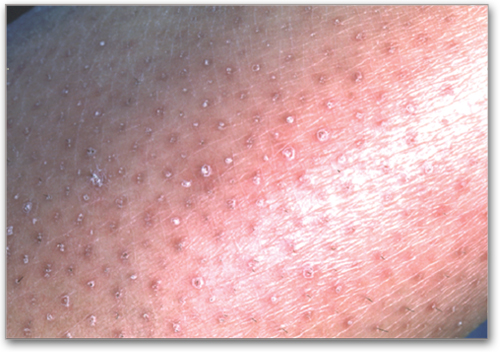
Pale to erythematous perifollicular papules with spiny keratotic plugs within the follicular openings
Maculopapular Rash***
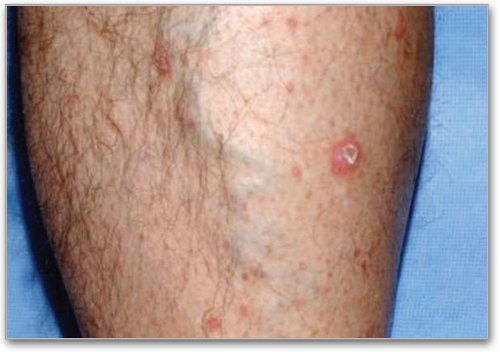
Raised and flat small, red lesions
Erythema***
Abnormal redness of the skin
Pruritus***
Localized or generalized itching
Erosion
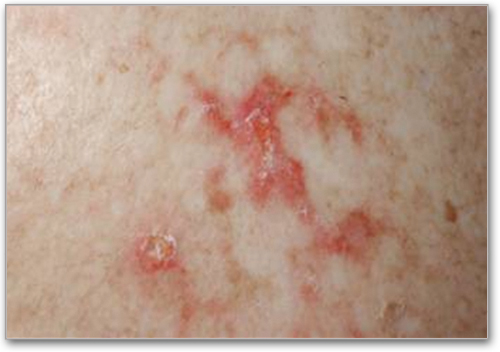
Localized skin lesion characterized by complete or partial loss of only the epidermis
Ulcer
Localized skin lesion in which the whole of the epidermis and at least part of the dermis has been lost. May extend into the subcutaneous fat
Notes
* Distinctive but insufficient alone to establish an unequivocal diagnosis of chronic GVHD without further testing or additional organ involvement
** Rare, controversial, or non-specific features of chronic GVHD
*** Common in both acute and chronic skin GVHD
References
- Jagasia MH, Greinix HT, Arora M, et al. National Institutes of Health Consensus Development Project on Criteria for Clinical Trials in Chronic Graft-versus-Host Disease: I. The 2014 Response Criteria Working Group Report. Biol Blood Marrow Transplant. 2015; 21(3): 389-401.
- Lee SJ, Wolff D, Kitko C, et al. Measuring therapeutic response in chronic graft-versus-host disease. National Institutes of Health Consensus Development Project on Criteria for Clinical Trials in Chronic Graft-versus-Host Disease: IV. The 2014 Response Criteria Working Group Report. Biol Blood Marrow Transplant. 2015; 21(6): 984-999.
- These guidelines have been developed by the National Marrow Donor Program® (NMDP)/Be The Match® in consultation with Sandra A. Mitchell, CRNP, MScN, AOCN; National Institutes of Health Clinical Center; and Steven Z. Pavletic, M.D.; National Cancer Institute, National Institutes of Health, Bethesda, Md. The information in this document does not represent the official position of the NIH or the U.S. Government.
Additional review from:
- Dennis L. Confer, M.D., NMDP/Be The Match, Minneapolis, Minn.
- Linda J. Burns, M.D., NMDP/Be The Match, Minneapolis, Minn.
- Madan Jagasia, M.D., Vanderbilt University Medical Center, Nashville, Tenn.
- Stephanie J. Lee, M.D., Fred Hutchinson Cancer Research Center, Seattle, Wash.
Text adapted from reports of the NIH Consensus Development Project on Criteria for Clinical Trials in Chronic Graft-versus-Host Disease from Biology of Blood and Marrow Transplantation by American Society for Blood and Marrow Transplantation. Reproduced with permission of Elsevier, Inc.
Photo Credits
- Photos/ Keratosis Pilaris; Lichen Planus-like; Hypopigmentation; Sclerosis; Erosion; Maculopapular: Maria L. Turner, M.D.; Edward W.Cowen, M.D.; Dermatology Branch, National Cancer Institute, NIH, Bethesda, Md.
- Photos/ Poikiloderma; Morphea; Lichen Planus-like; Lichen Sclerosus-like; Hyperpigmentation; Sclerosis; Nail dystrophy; Alopecia; Edema: Edward W. Cowen, M.D.; Dermatology Branch, National Cancer Institute, NIH, Bethesda, Md.
- Photos/ Lichen planus; Mucoceles; Erythema: Mark M. Schubert, D.D.S., M.S.D.; Fred Hutchinson Cancer Research Center, Seattle, Wash.
- Photo/ Keratoconjunctivitis: Mary E.D. Flowers, M.D.; University of Washington, Seattle, Wash.
- Photo/ Blepharitis: Janine A. Smith, M.D.; National Eye Institute, NIH, Bethesda, Md.
All photos used with permission.